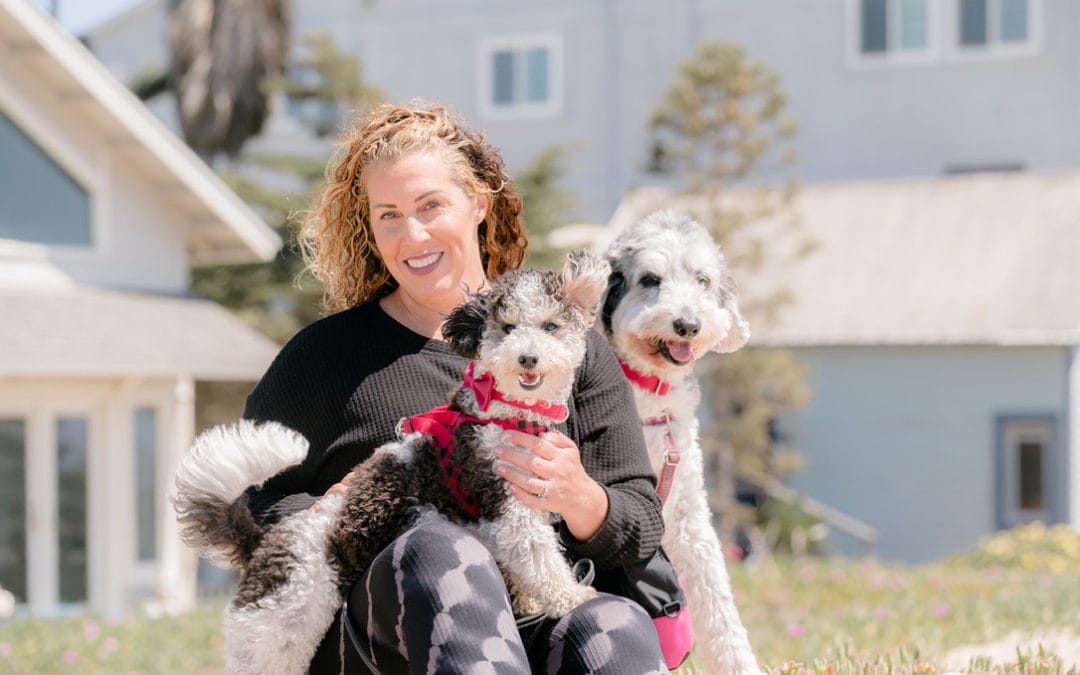When it comes to training your dog, it’s really important that you master the human side of things. When you ace the human skills, training your dog will become easier for both you and your dog.
Let’s explore the dog training techniques that will supercharge your dog training, delivering you faster results and clarity on how to train your dog effectively.
Management: Preventing your dog from practicing things you don’t want them to do!
Dogs learn really quickly to repeat things that work and rapidly develop habits that are difficult to change. Management comes in many forms, but they all share one common purpose, to prevent your dog from practising undesirable behaviors.
If your dog has started to practice behavior that you don’t want, such as counter surfing, bolting out the door, or jumping up at people, you will need to put suitable management in place to prevent things escalating.
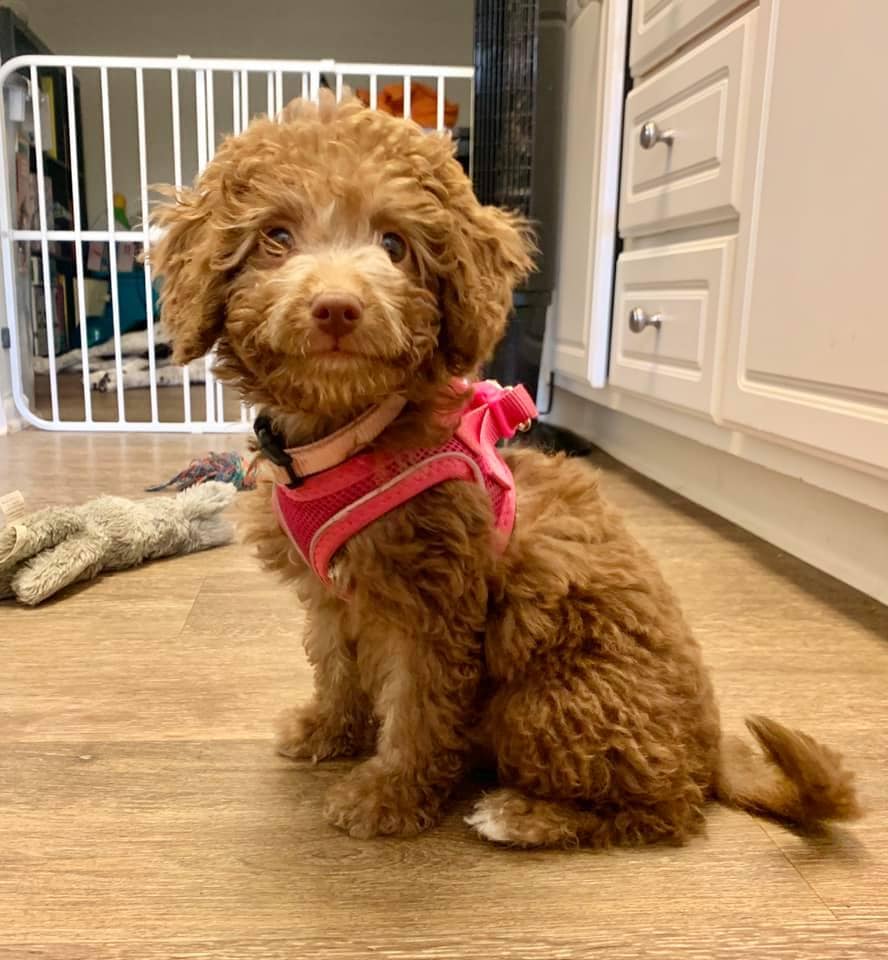
The sooner you can do this, the easier training an alternative behavior will be.
Management can be training tools such as pens or crates to create a safe space for your dog and prevent access to certain areas of your home.
You can also use baby gates at doorways to avoid your dog escaping when visitors arrive. These are great for managing interactions with people.
Long lines can be used when teaching your dog a reliable recall, so they don’t run off to exciting distractions.
Put things away that you don’t want your dog to get hold of and they won’t practise chewing or running off with your favorite shoes!
Provide plenty of toys and chew items to engage with and provide outlets to make sure your dog can engage in activities that make them happy.
Teaching a new behavior to your dog
There are many options for teaching your dog a new behavior. A few options are:
- Luring
- Targeting
- Shaping
- Capturing
When training your dog, you’ll likely use a combination of methods. It’s a great idea to practice each technique and see what works best for you and your dog. You’ll probably find different methods will get you quicker results depending on what you’re training.
Luring
Luring is where you use food to show your dog what you’d like them to do, then rewarding them with the treat when they get it right. This is a simple but effective way to build behavior quickly, and it’s fun for your dog.
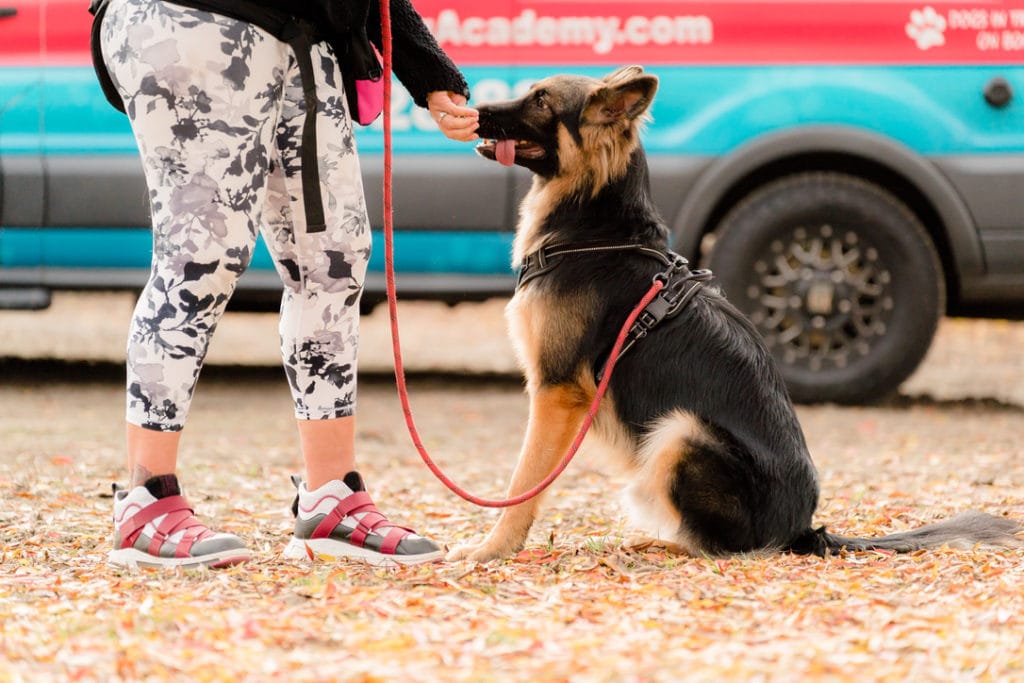
Start by holding a treat between your thumb and fingers. Then, show your dog the treat, and move it slowly away from their nose, as they follow it by moving their body. Be sure to keep it close to your dog’s nose and if the gap widens at any point, bring the food closer and move more slowly.
You’ll want to mark and reward your dog every step to begin with.
Then you can build up to lengthening the distance your dog will happily follow the lure before you reward them.
It’s important to know that when luring, your dog can become really fixated on the food. This can sometimes overshadow the behavior you’re trying to teach.
If you want your dog to eventually do the behavior without food in your hand, it’s important to fade out the food lure as soon as possible. So, after a couple of repetitions of learning the behavior with food, repeat the action without food in your hand. Your dog will follow as before, and you can mark and reward them with food from your pocket or treat pouch instead.
This will teach your dog that even though they can’t see the food, they will still be rewarded for their efforts. This builds trust and helps keep your dog motivated to work with you.
Targeting
Teaching your dog to target your hand or other objects with their nose is great for keeping your dog’s attention around distractions or building more advanced behaviors later.
To start with, present a flat hand towards your dog and wait for them to investigate. Mark and reward as soon as their nose makes contact with your hand.
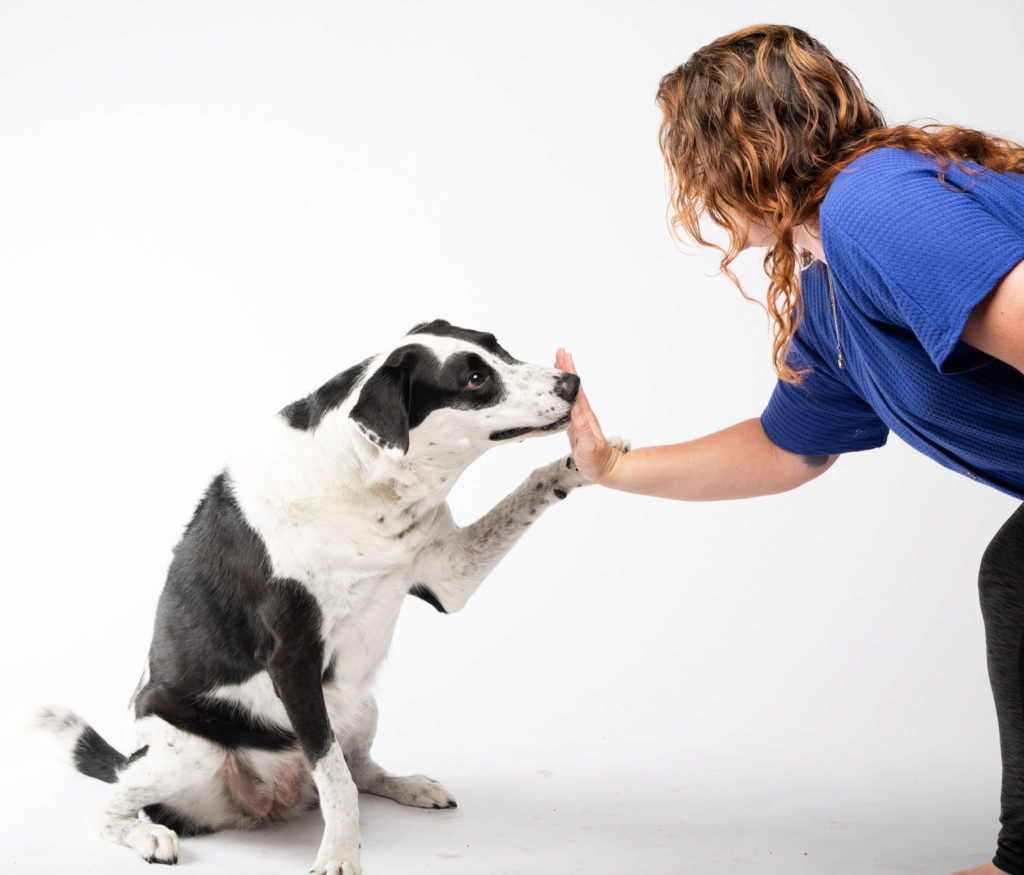
If your dog struggles initially, you can always rub a treat on your hands to get them interested and to help them succeed.
After a few repetitions, hold your hand further away, so your dog has to take a step to make contact. Practice in all directions and with both hands, so your dog understands all the variations.
From here, you can start to create a moving target by continuing to move your hand as your dog is approaching. This is a critical step if you want to use hand targeting to teach your dog behaviors in the future.
When your dog has mastered the art of nose targeting, you’ll be able to teach follow-on behaviors, including peekaboo, stand and paws up.
Shaping
Shaping is great for getting your dog to think for themselves and build confidence. But dogs can become frustrated if the incremental steps are too big or they’re used to being shown what to do.
Shaping involves gradually teaching your dog a new behavior by rewarding them for every little step in the right direction. You want to have a behavior in mind and a rough idea of the steps needed to get there.
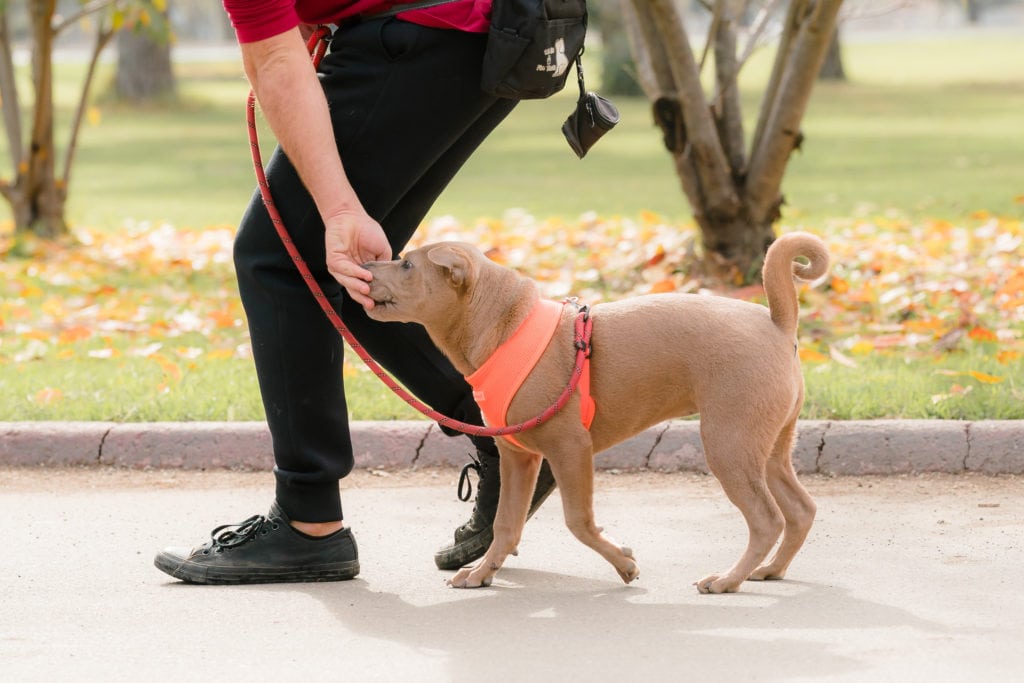
When your dog offers something close to the desired behavior, you mark and reward. If they offer something that is further from it, you don’t reward.
At every step, your dog is learning what works and what doesn’t work. Natural variation in their actions means you can start to shape and hone the behavior until your dog can do the final desired action.
Before beginning a shaping session, plan out the probable steps to take you to the end goal. Start with something your dog can do easily and build up in logical steps to the finished behavior.
Capturing
Capturing is great for rewarding naturally offered behavior. Catch your dog doing something you like, and reward!
For capturing to be an effective training method, your dog needs to naturally offer the behavior frequently.
As you train new behaviors with your dog, think about which method will be best in each situation. Practice using each of the methods so that you and your dog have multiple options when it comes to building new skills.
Marker training
Getting the timing of your marker right when you mark and reward is essential to your dog training success.
You want to mark and reward your dog at the exact moment when they’re doing the thing you’re asking of them. Too soon and your dog hasn’t done the behavior yet, but too late and your dog is doing something else entirely.
Reward Placement
When it comes to building behavior, reward placement has a huge impact, but is often overlooked. Where and how you reward your dog will impact the final behavior you build significantly.
For example, if you’re teaching your dog to run to their bed and lay down, you might choose to reward your dog on their bed. This will help to build value for being on the bed, serve to build calmness and keep your dog in position for duration, particularly if you give multiple rewards one after the other.
Alternatively, you might choose to reward your dog away from the bed after getting into position.
This has the benefit of setting your dog up for another repetition but also results in energizing your dog, which can cause them to move more quickly into position.
There’s no right or wrong way, both are perfectly valid and will teach your dog the behavior but the detail of the finished behavior will be shaped by the choices you make.
Another example of reward placement and shaping behavior is loose lead walking.
When you choose to reward your dog and where, will affect how close to you they walk, whether they’re in front or behind and if they stay to your side or cut across in front of you as you move.
It’s also possible to mark for a behavior in one location, but reward them in a different place.
For example, when working on your recall training, you might first mark when your dog turns to look at you, but then offer the reward right in front of you to further build the behavior.
If you repeat this several times, your dog will start to move towards you as they check in, because the placement of the reward drives the behavior of moving closer to you.
Improving your awareness of reward placement will massively help you when it comes to teaching your dog new behaviors.
The Art of Treat Delivery
Being able to skillfully give your dog a treat in the right location, quickly and without dropping food to the floor, can take a bit of practice to get right. Investing time to improve your own dexterity will help you level up your skills and make training your dog much easier.
Practice without your dog first. Take several treats in your hand, and put one down into a cup. Continue until you’ve placed out all of the treats. Practice with both hands and even time yourself to see how quickly you can accurately deliver 10 treats, one after the other.
Next, place your treats in a small bowl right next to the hand you are going to use to deliver the treats. This bowl will represent your treat pouch. Practice going from bowl (next to you) to delivering the treat into a cup and then bringing your hands back to your default position. Again, practice with both hands and to make this even more challenging you can change the delivery from a cup to a placing the treats into a bottle.
When you’re doing really well with this, it’s time to add your dog into the equation.
Start with your dog in front of you and practice rewarding treats one at a time from your closest hand. Remember to bring your hand back to your default position between treats. When you have this mastered, you can start to practice on the move with your dog.
Putting in the time to master your treat delivery will make it second nature when it comes to training together.
Adding distraction duration and distance
Once you’ve taught your dog a behavior, you’ll want to make sure that you continue to scale up the difficulty over time if you want your dog to be able to reliably offer behavior in any situation.
When you’re ready to progress your training there are three areas you can focus on: distraction, duration, and distance.
To set your dog up for success, it’s important to only increase the difficulty in one of these areas at a time.
Practice getting your dog to do behaviors they know well as people or dogs walk by, vehicles drive past or around other distractions.
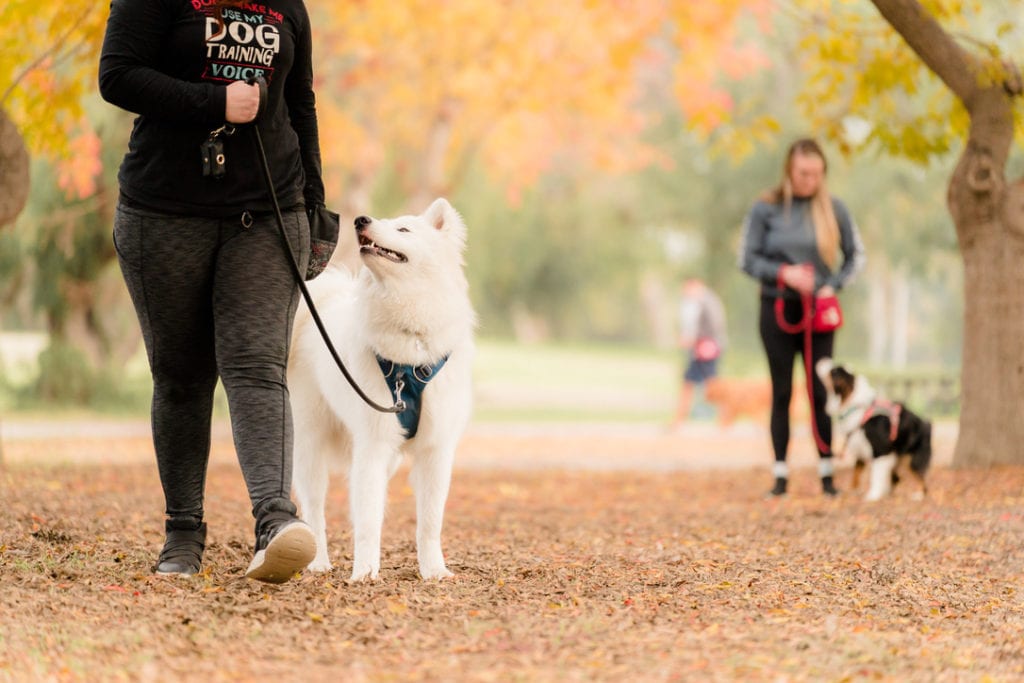
Keep an eye on your dog’s body language and if you notice them getting worried or excited, increase your distance from the distraction.
You can also work on building up your dog’s ability to remain in a chosen position for a longer duration. Initially this might be a few seconds, but you can gradually increase the duration so that your dog is able to settle on a blanket throughout family meal time, or to sit at a busy crossroads until it’s safe to cross.
Distance can relate to how far away you move from your dog while they remain in position, or how far away you are from your dog when you cue them.
In both cases, build up in small increments so that your dog is successful. As always, remember to take things at your dog’s pace, keep training sessions short and have fun!
Teaching a release cue
Teaching your dog a release cue is really valuable. This is a short word, sound or signal that lets your dog know the task they’re doing is finished and they can do something else.
You can use it to let your dog know they can move out of a position, go through a door. say hello to friends, have their food or go sniff and explore on a walk.
You can teach this by asking your dog to go to a position they know really well, like sit or down. After they’ve been in position for a couple of seconds say your chosen release cue, (like okay or free), and immediately cue them to get and toss a treat away for your dog to chase.
You want to make sure your dog hears the release word before they hear ‘get’.
As you practice, start to delay the prompt to get by a second or two. Give your dog time to think!
In time, your dog will start to associate the two words and will get up when you say the release, without you needing to prompt them to get.
When this happens, celebrate and reward your dog enthusiastically. From here on, say only the release cue and wait for your dog to move before marking and rewarding.
You can proof your dog’s release word by adding in distractions and rewarding your dog if they don’t move when you haven’t said their release cue.
Also, practice words that don’t mean anything to your dog and reward them for staying still until you say the release cue. Practice until your dog is brilliant at holding their position or waiting in different situations until you release them.
In Conclusion
So there you have our top dog training tips and tricks to help you nail your dog training exercises. Happy practicing!
For more dog training advice and support, follow us on Facebook or Instagram and we’ll share plenty more nuggets of gold to help you and your dog to thrive.

